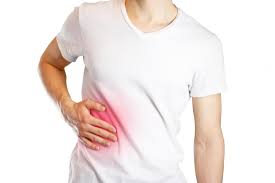Bile duct obstruction is a blockage in the tubes that carry bile from the liver to the gallbladder and small intestine. Bile is a fluid produced by the liver that helps digest fats. When bile ducts become blocked, bile cannot flow normally and a buildup of bilirubin occurs. This can lead to jaundice and other complications. There are several potential causes of bile duct obstruction. Consulting the Best Gastroenterologist in Chennai can help diagnose and treat bile duct obstruction.
Causes of Bile duct obstruction
- Gallstones – The most common cause of bile duct obstruction is gallstones. Gallstones form when substances in the bile harden into stone-like deposits. Gallstones from the gallbladder can travel into the common bile duct where they can become stuck, blocking the flow of bile.
- Cancer – Cancerous tumors that form in the bile ducts, gallbladder, pancreas or liver can grow to obstruct bile flow. For example, pancreatic cancer is known for spreading to the common bile duct.
- Inflammation – Chronic inflammation of the bile ducts, called primary sclerosing cholangitis, can cause swelling, scarring and narrowing of the ducts. This leads to a decrease in bile flow.
- Injury – Physical trauma to the abdomen area can damage the bile ducts and cause obstructive scarring. Bile duct injury is a known complication of gallbladder surgery.
- Congenital defect – Some people are born with cysts, narrowing or abnormal bile duct anatomy that inhibits bile flow.
Symptoms
- Jaundice – Yellowing of the skin and whites of the eyes due to bilirubin buildup. This is the most common symptom.
- Itching – The accumulation of bilirubin can cause general itching.
- Light colored stools – Without bile, stools lose their typical brown color and appear pale.
- Dark urine – Excess bilirubin passes into the urine and makes it dark.
- Abdominal pain – Pain in the upper right abdomen can occur if gallstones are causing the obstruction.
- Fever – Some cases lead to infection which may result in fever and chills.
- Nausea/vomiting – Bile flow blockage can cause nausea and vomiting in some individuals.
Diagnosis of Bile duct obstruction
If bile duct obstruction is suspected, the doctor will take a full medical history and perform a physical exam checking for jaundice and abdominal tenderness. Diagnostic tests that may help confirm the diagnosis include:
- Blood tests – Liver function tests can show elevated bilirubin and liver enzymes.
- Ultrasound – Abdominal ultrasound provides images of the bile ducts and can detect blockages.
- CT scan – Helps locate tumors, stones, strictures, and other issues that could cause bile duct obstruction.
- MRCP – Magnetic resonance cholangiopancreatography uses MRI technology to visualize the bile ducts.
- ERCP – Endoscopic retrograde cholangiopancreatography combines endoscopy and x-rays to view the bile ducts. It also allows the doctor to take a biopsy or insert a stent if needed.
- PTC – Percutaneous transhepatic cholangiography involves injecting dye into liver tissue to highlight the biliary system on x-rays.
Treatment of Bile duct obstruction
Treating bile duct obstruction aims to resolve the underlying cause and restore normal bile flow. Treatment options depend on the location and severity of the blockage.
- Medication – Drugs that help dissolve gallstones may be prescribed if they are the cause of the obstruction.
- Surgery – Gallbladder removal, tumor resection, stricture dilation or other procedures may be done to eliminate the blockage.
- ERCP stent – A small tube called a stent can be placed endoscopically to keep a blocked bile duct open.
- PTC drainage – If ERCP is unsuccessful, a drainage catheter can be inserted through the skin to bypass the bile duct obstruction.
- Liver transplant – A liver transplant may be necessary in people with extensive damage or chronic infections.
Lifestyle Measures
There are some helpful lifestyle measures people with bile duct obstruction can take. These include:
- Low-fat diet – Reducing fat intake makes it easier to digest food without bile.
- Vitamin supplements – Supplements help replace fat-soluble vitamins that may be poorly absorbed.
- Avoiding alcohol/drugs – These substances can further damage the liver.
- Weight loss – Losing weight reduces cholesterol production and risk of gallstones.
Prognosis
The outlook for people with bile duct obstruction depends on the underlying cause and how quickly treatment is received. Quick treatment of gallstone blockages usually leads to a good prognosis. However, the prognosis is poorer if bilirubin levels stay high for an extended time, causing severe jaundice and liver dysfunction. Tumors have a poorer prognosis compared to benign causes. Overall, early detection and management is key to maintaining liver function and preventing serious complications.
